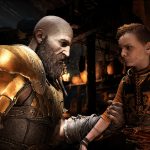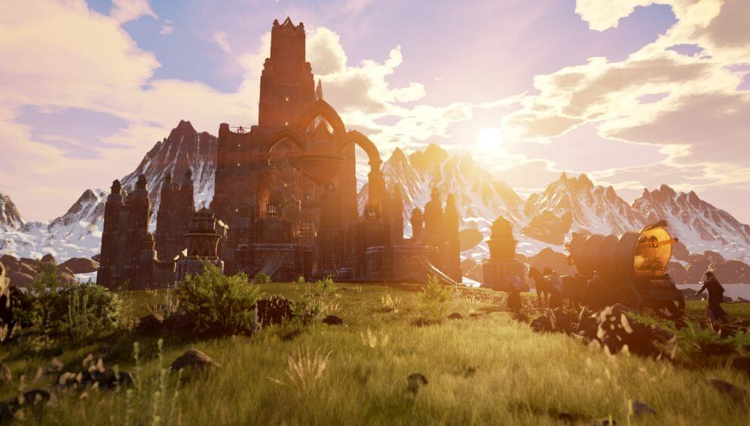Ever since its humble beginnings in the mid-’90s, PlayStation has thrived on keeping its players engaged with trademark franchises. Game series such as Metal Gear Solid, Crash Bandicoot, Gran Turismo, Uncharted, and more. God of War has always stood out thanks to its take on Greek mythology, blending an immersive, continuous story with a brilliantly bloody visual aesthetic. Originating on the PlayStation 2, the franchise has traversed multiple generations of gaming, still remaining a staple in PlayStation’s library. The story concluded with God of War III, despite a few prequels after, and it wasn’t until E3 2016 that we finally got a look at the fourth main installment. Coupled with a different combat and camera system, the game takes hold of a Norse-mythology-focused story instead of a Greek one, giving us peeks at the Norse realms. A God of War reboot is always wanted, but the switching of mythology really helps to create a new, refreshing experience.
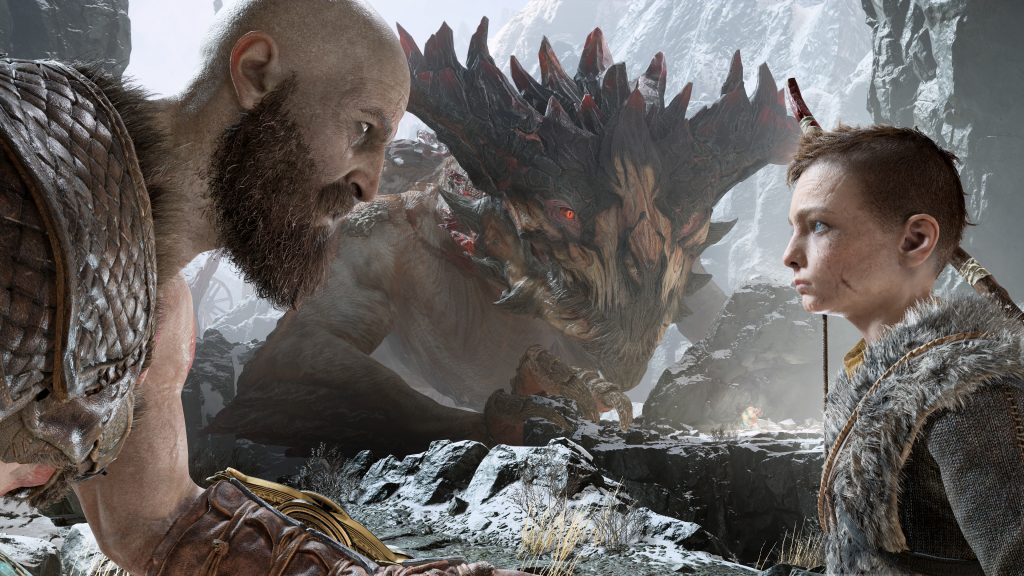
Minor spoilers ahead.
Kratos embarks on another personal journey, but this time he’s not setting out to massacre the gods. While some do show up (both in person and in dialogue), the main story revolves around him attempting to travel to the realm of Jötunheim to spread his wife Faye’s ashes, accompanied by his and Faye’s son, Atreus. Over the course of the journey, they encounter many barriers, both physical and mental, in addition to a continuous force named Baldur whose motives are unknown. For a franchise that mainly focused on frenetic action and gore in previous installments, it’s slightly odd at first to see such a story-and-character-driven episode. However, once the game gets going (and it takes a good few hours to), you won’t want to put your controller down.
There aren’t many problems with God of War. Even the things that don’t live completely up to expectations don’t drastically impact the main story much. The first issue is the boss fights. At the beginning and end, the boss fights with Baldur are pretty freakin’ awesome. They’re both exhilarating, never failing to serve thrills during the time that they last. With that in mind, none of the ones in-between are up to par. All of them are decently engaging and are a fine obstacle for players to beat, but there just isn’t that sense of engagement provided by the Baldur fights. That’s not to say that they aren’t fun at times, but some do feel boring in points.
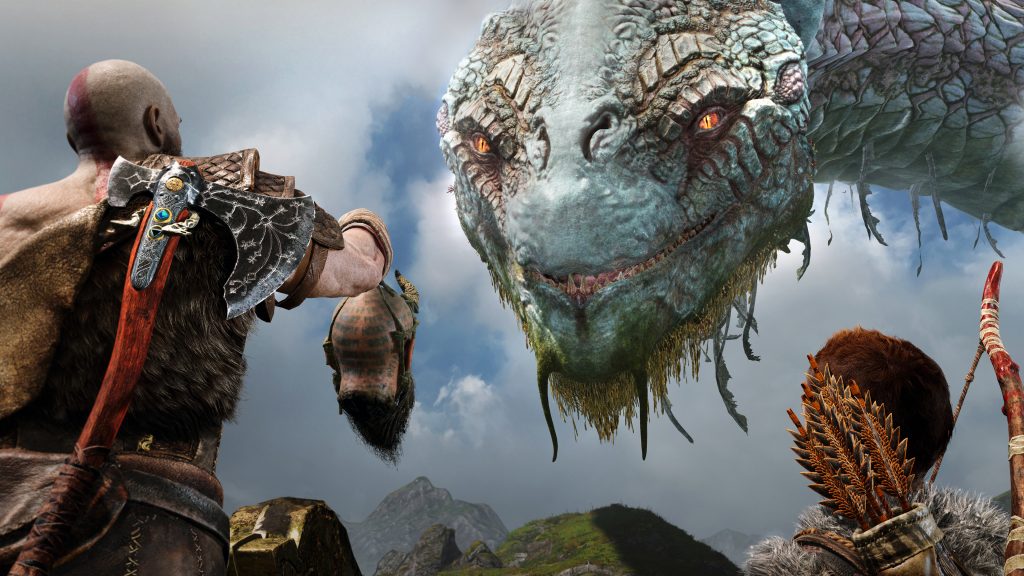
That being said, after you finish the story (or before, if you’re crazy enough to be up to the task), there are nine Valkyries scattered throughout the realms, each of them a true challenge and better than any of the bosses in the main game. There’s four in Midgard, four more in Alfheim, Helheim, Muspelheim, & Niflheim, and a queen after defeating the first eight. Each of them can be really infuriating in different ways, but the key is persistence, strategy and memorizing their attack patterns. It’s all a matter of having the right armor, runic attacks and enchantments, as they’re all truly helpful in the long-run. With the right combination, you can easily give Kratos the upper hand in a grueling battle.
The queen, Sigrún, is a masterclass in boss battles. She’s the hardest boss in the entire game, and yet never feels unfairly challenging. She combines every major attack from her predecessors, working towards a duel that truly feels infuriating at times. However, once you do defeat her, it’s really satisfying. Picking up the final valkyrie helm and collecting the armor is super refreshing. The Muspelheim trials can also be enraging, especially the fifth one, but they’re still engaging and fun to try and beat.
In terms of graphics, this game is pretty much perfect. The environments are lush and detailed, some perfectly bleak and others wonderfully vibrant. The characters are incredibly detailed, from the hair on their skin (just look at Kratos’ beard!) to the wrinkles and frays in their armor. The enemies aren’t that all wildly inventive, many of them actually lacking in any special character design, but occasionally there are some that do look genuinely cool. These were the Dark Elves, which I found to share a resemblance with the Faun from Pan’s Labyrinth, and the Wulvur, neat-looking werewolf creatures. The Valkyries are each designed quite imaginatively, each one looking continuously more complex than the last. While not as stunning as other recent games, God of War is pretty damn impressive.
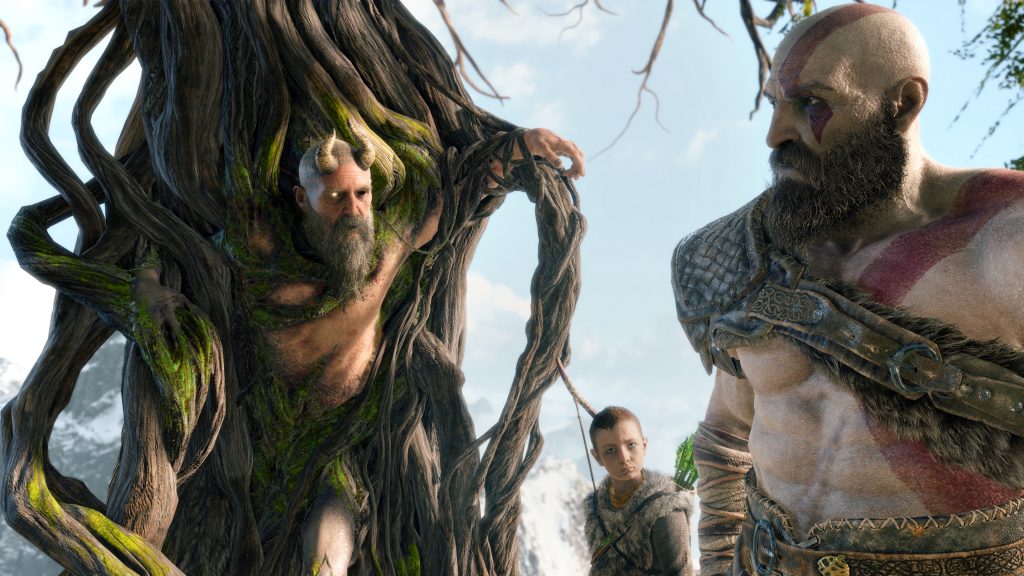
We will be the gods we choose to be, not those who have been. Who I was is not who you will be. We must be better.”
Kratos shows extreme strength as a protagonist. He slaughtered the Greek gods out of rage, acting as an anti-hero for the franchise to follow. Here, you see him desperately struggle to not let those moments define who he his, and try to carve out a better path for his son. With this mesmerizing theme, it’s through little moments that the game thrives. An example of this is when Atreus begins to get arrogant and power-hungry and Kratos angrily stops him from doing something terrible. It’s a drastic change from past interpretations, but as far as reboots go, this one truly captures the essence of what one should be.
Atreus is a wholly welcome side character, one that provides a lot of help in many aspects. His bow and arrows can be charged to blow up crystals or be used to create bridges of light across gaps. When battling enemies, you can command him to shoot at them, dealing some decent damage. In addition, he can generate animal forms with his arrows, such as a pack of wolves who ruthlessly attack the opponent. He’s extremely useful despite being annoying and arrogant at points, but those traits go towards the development of his personality and relationship with his father. The writing for him is absolutely perfect and encapsulates everything needed to show growth in a character.
After you complete the main story, there are a number of side quests (dubbed “Favors”) that you can complete for extra experience and resources. They’re all relatively short, yet engaging. I found myself continuously waiting to complete one so I could move onto the next and further explore the Lake of Nine, but in addition to that, you can also pick up extras that you can’t get during the story. When completing a favor for Sindri (one of the two dwarves who craft your armor and weapons), you can pick up the “Shattered Gauntlet of Ages”, a talisman resembling the Infinity Gauntlet from Avengers: Infinity War, with six corresponding enchantments you can find scattered throughout the world. It starts off as one of the weakest items the game has to offer, but when it’s fully upgraded, your enemies will wish they never crossed your path.
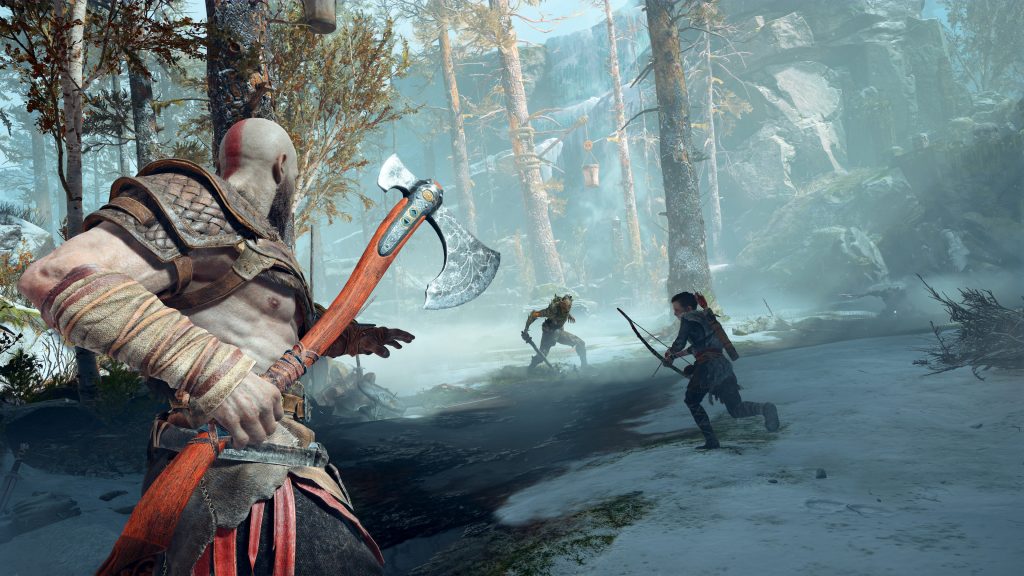
A reboot done right, God of War proves to outdo every ounce of expectation set by fans. For a franchise once filled with a plethora of violence and sex, it’s exhilarating to see the series revitalized in this form. The story is a fully-fledged masterpiece, with emotionally investing characters, dialogue, and actions. Most of the boss battles can be a bit boring, but once you start slaying the Valkyries and conquering the Muspelheim trials, you’ll wish the greatness will never end. The environments are gorgeous, filled with lush colors and detail, which makes for an even more riveting playthrough. God of War is the best game of 2018 so far, and one of the highlights of PlayStation’s repertoire.
Grade: 9.5 / 10
God of War is available for PS4.



